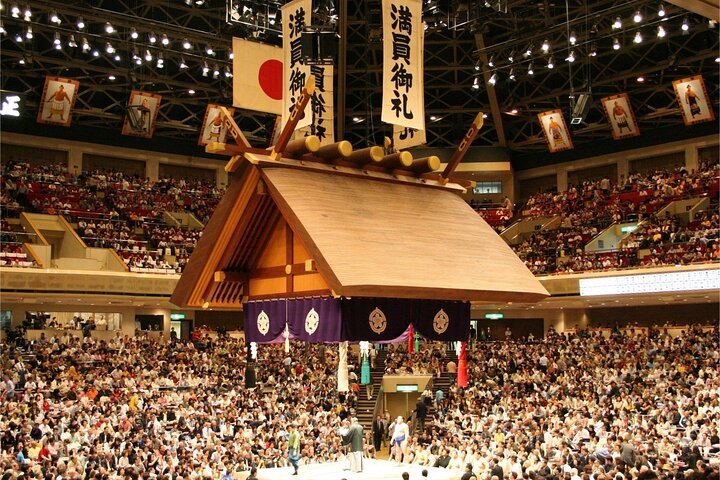Why choose this Tokyo tour ?
Tokyo: Experience the captivating energy of this bustling metropolis and its culture and history of many historical and heritage places.
Tsukiji Fish Market: Explore Tokyo’s vibrant seafood market, sampling fresh delicaciese.
East Gardens of the Imperial Palace: Stroll through these serene gardens, part of the historic Imperial Palace grounds, and enjoy the beautiful landscape.
Sensoji Temple: Visit Tokyo’s oldest temple in Asakusa, admire the grand Kaminarimon Gate, and explore Nakamise Street for traditional treats and souvenirs.
Tokyo Skytree: Enjoy panoramic views of Tokyo from the observation decks of Japan’s tallest structure.
Meiji Jingu Shrine: Experience the tranquility of this Shinto shrine dedicated to Emperor Meiji and Empress Shoken.
Takeshita Street: Dive into the vibrant youth culture of Harajuku, known for its unique fashion and trendy shops.
Shibuya Crossing: Witness the iconic Shibuya Crossing, one of the world’s busiest pedestrian intersections.
Make the most of your Tokyo adventure
What makes Tokyo Private SightSeeing Day Tour a unique experience ?
Tsukiji Marketis a major tourist attraction for both domestic and overseas visitors in Tokyo.[1] The area contains retail markets, restaurants, and associated restaurant supply stores. Before 2018, it was the largest wholesale fish and seafood market in the world.[2] The market opened on 11 February 1935 as a replacement for an older market that was destroyed in the 1923 Great Kantō earthquake.This bustling open air market is high on the list of top Tokyo attractions, and there’s something for everyone — not just the seafood lovers
The Imperial Palace East Gardens ( Kōkyo Higashi Gyoen) are a part of the inner palace area and are open to the public. They are the former site of Edo Castle’s innermost circles of defense, the honmaru (“main circle”) and ninomaru (“secondary circle”). None of the main buildings remain today, but the moats, walls, entrance gates and several guardhouses still exist.
Edo Castle was the residence of the Tokugawa shogun who ruled Japan from 1603 to 1867. Emperor Meiji also resided there from 1868 to 1888 before moving to the newly constructed Imperial Palace.
Sensoji (Sensōji, also known as Asakusa Kannon Temple) is a Buddhist temple located in Asakusa. It is one of Tokyo’s most colorful and popular temples.
The legend says that in the year 628, two brothers fished a statue of Kannon, the goddess of mercy, out of the Sumida River, and even though they put the statue back into the river, it always returned to them. Consequently, Sensoji was built nearby for the goddess of Kannon. The temple was completed in 645, making it Tokyo’s oldest temple
The Tokyo Skytree is a television broadcasting tower and landmark of Tokyo. It is the centerpiece of the Tokyo Skytree Town in the Sumida City Ward, not far away from Asakusa. With a height of 634 meters (634 can be read as “Musashi”, a historic name of the Tokyo Region), it is the tallest structure in Japan and was the second tallest in the world at the time of its completion. A large shopping complex with an aquarium is located at its base.
Meiji Shrine ( is a shrine dedicated to the deified spirits of Emperor Meiji and his consort, Empress Shoken.The shrine was completed and dedicated to the Emperor Meiji and the Empress Shoken in 1920, Entry into the shrine grounds is marked by a massive torii gate, after which the sights and sounds of the busy city are replaced by a tranquil forest. The approximately 100,000 trees that make up Meiji Jingu’s forest were planted during the shrine’s construction and were donated from regions across the entire country.
Japan’s wackiest youth cultures come alive at Harajuku’s Takeshita-dori. StreetCalbee chips, candy floss and crepes await you at Harajuku’s Takeshita-dori Street, a pedestrian shopping jungle that is quite the sensory overload with food and fashion options popular among Tokyo’s trend-setting youthThe 350-meter Takeshita-dori Street, starting across the road from JR Harajuku Station, is geared towards Tokyo’s fashion and trend-conscious set. Lady Gaga is known to shop here—despite its reputation for being kawaii cute, there are also several boutiques that specialize in edgy grunge and goth fashion.
For an undeniably Japanese experience, check out the purikura photo booths where you can snap, customize and decorate pictures with your friends before they are printed on the spot.
Shibuya Scramble Crossing commonly known as Shibuya Crossing, is a popular pedestrian scramble crossing in Shibuya, Tokyo, Japan.[1] It is located in front of the Shibuya Station Hachikō exit and stops vehicles in all directions to allow pedestrians to inundate the entire intersection. The statue of Hachikō, between the station and the intersection, is a common meeting place, which is almost always crowded.
Hachikō (ハチ公, November 10, 1923 – March 8, 1935) was a Japanese Akita dog remembered for his remarkable loyalty to his owner, Hidesaburō Ueno, for whom he continued to wait for over nine years following Ueno’s death. Faithfully waiting for the return of his deceased owner for more than nine years until his death.
Tour Description & Additional Info:
- Infants and small children can ride in a pram or stroller
- Public transportation options are available nearby
- Infants are required to sit on an adult’s lap
- Suitable for all physical fitness levels
- The duration of the tour includes travel time
Options To Choose for Your Trip:
Not Included
- Entry/Admission Of Attractions
- *Gudie service will be extra
Trending Tokyo Nearby Tours Likely To Sell Out
Special Instructions:
- This Tour is Provided by Thetokyotravel.com.
- Tour Timezone & Starts at Asia/Tokyo.
- Mobile or paper ticket accepted.
- For a full refund, cancel at least 24 hours before the scheduled departure time.
- This Tour is Rated 5 Stars based on 9 valid reviews on VIATOR.
- Minimum 1 Travelers is required to book.
- Maximum 15 Travelers is accepted for booking.










